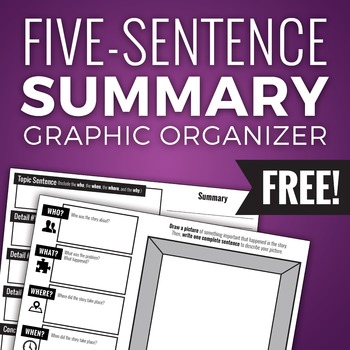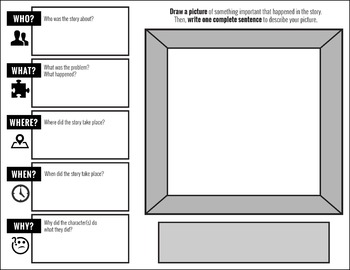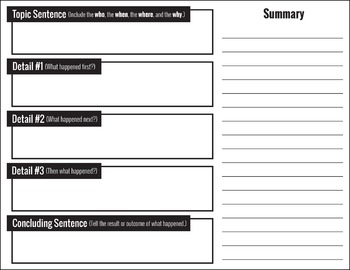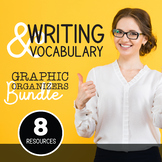- PDF
Also included in
- Save big! This bundle of writing and vocabulary graphic organizers contains a variety of print-and-go tools for you to use throughout the year in your English Language Arts class. Download this resource and gain instant access to everything from basic summaries to five-paragraph essay graphic organiPrice $14.00Original Price $20.00Save $6.00
Description
This two-page graphic organizer helps students organize their thoughts and write a clear, well-structured five-sentence summary of a fiction or nonfiction text. Many students struggle to include the most important details in their summaries, or these details are not presented in a logical order. This document breaks down the task of writing a summary into smaller tasks, beginning with identifying the who, what, where, when, and why of the story.
This document contains two pages. The first page asks students to identify who the story was about, what happened in the story, when the story happened, where the story happened, and why the events in the story happened. Also on the first page, students can demonstrate their understanding of the text by drawing a picture with a caption.
The second page helps students to organize their summary into a logically sequenced five-sentence paragraph that begins with a topic sentence and ends with a concluding sentence. Students should use the left side of the page to write full sentences for each prompt. Then, students can recopy their sentences neatly onto the lines on the right side of the page for a complete paragraph.
Teachers can use both pages of the document to help students show a thorough understanding of the text, or they can use each page individually. Some teachers may even choose to cut apart the organizers to further individualize their instruction.
You may also like:
Graphic Organizers:
- Paragraph Writing Graphic Organizer
- Five-Paragraph Essay Graphic Organizer
- Persuasive Essay Graphic Organizer
- Personal Narrative Brainstorming Packet and Graphic Organizer
- BioPoem (Biographical Poem) Graphic Organizer and Example
Posters:
- Citing Textual Evidence Poster
- Plagiarism Poster: "Learn from Others but Always Cite Your Sources"
- THIEVES Reading Strategy Printables Kit: Poster, Bookmarks, Handout
- Making Connections Poster Set: Text to Self, Text to Text, Text to World
- Vocabulary Poster: Words of the Week
Templates:





